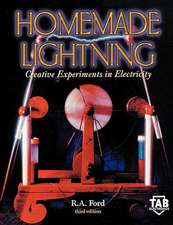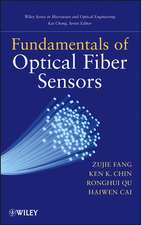Competitive-cum-Cooperative Interfirm Relations and Dynamics in the Japanese Semiconductor Industry
Autor Yoshitaka Okadaen Limba Engleză Paperback – 23 oct 2012
Preț: 386.00 lei
Nou
Puncte Express: 579
Preț estimativ în valută:
73.86€ • 77.32$ • 61.12£
73.86€ • 77.32$ • 61.12£
Carte tipărită la comandă
Livrare economică 07-21 aprilie
Preluare comenzi: 021 569.72.76
Specificații
ISBN-13: 9784431679844
ISBN-10: 4431679847
Pagini: 260
Ilustrații: XVIII, 238 p.
Dimensiuni: 155 x 235 x 14 mm
Greutate: 0.37 kg
Ediția:Softcover reprint of the original 1st ed. 2000
Editura: Springer
Colecția Springer
Locul publicării:Tokyo, Japan
ISBN-10: 4431679847
Pagini: 260
Ilustrații: XVIII, 238 p.
Dimensiuni: 155 x 235 x 14 mm
Greutate: 0.37 kg
Ediția:Softcover reprint of the original 1st ed. 2000
Editura: Springer
Colecția Springer
Locul publicării:Tokyo, Japan
Public țintă
ResearchCuprins
One Theory of Competitive-cum-cooperative (CCC) Interfirm Governance.- A. Theoretical Bases: Transaction Cost Economics and Path-dependent Institutional Development.- B. Harmonizing Mechanisms and Path-dependent Institutional Development.- C. Institutions and Transformation of Cooperative Behavior.- D. Competitive-cum-cooperative Interfirm Relations.- E. Propositions for Empirical Inquiry.- Two.- A. Typology of Technological Innovativeness.- B. Development of the Transistor in Japan.- C. Development of the Integrated Circuit (IC) and Other Semiconductors.- D. Development of the Large-scale Integrated Circuit (LSI) and Other Semiconductors.- F. Development of Ultra-large-scale Integrated Circuit (ULSI) and Other Semiconductors—Leveraged Creativity Period (1984–1992).- Three Basic Characteristics of Intra- and Interfirm Interaction.- A. Prevalence of Competitive-cum-cooperative Interaction in Business Transactions.- B. Nature and Characteristics of Interaction.- C. Summary.- Four Effects of Cooperation-oriented CCC Interaction in Procurement Relations.- A. Procurement of Parts and Materials.- B. Procurement of Manufacturing Equipment.- C. Comparison of CCC Interaction in the Procurement of Parts/Materials and of Equipment.- Five Effects of Competition-oriented CCC Interaction in Sales and Internalized Interaction in R&D.- A. Sales.- B. Dynamics of Intrafirm Relations in R&D.- C. Comparison of CCC Interaction in the Procurement of Parts/Materials and Sales.- Six CCC Dynamics and Structure of Intra- and Interfirm Relations.- A. Dynamic Mechanism of Competitive-cum-cooperative Interfirm Relations.- B. Overall Structure of Intra- and Interfirm Relations.- Author Index.
Caracteristici
Both theoretically and practically, this book explains how the interfirm relations have contributed to the success of Japanese semiconductor industry during the golden age (1977-1992) The real sources of dynamics in interfirm relations and actual types of interaction are discussed The unique point is the author's own theory called "Competitive-cum-Cooperative Interfirm Relations" which is the keyword in this book







